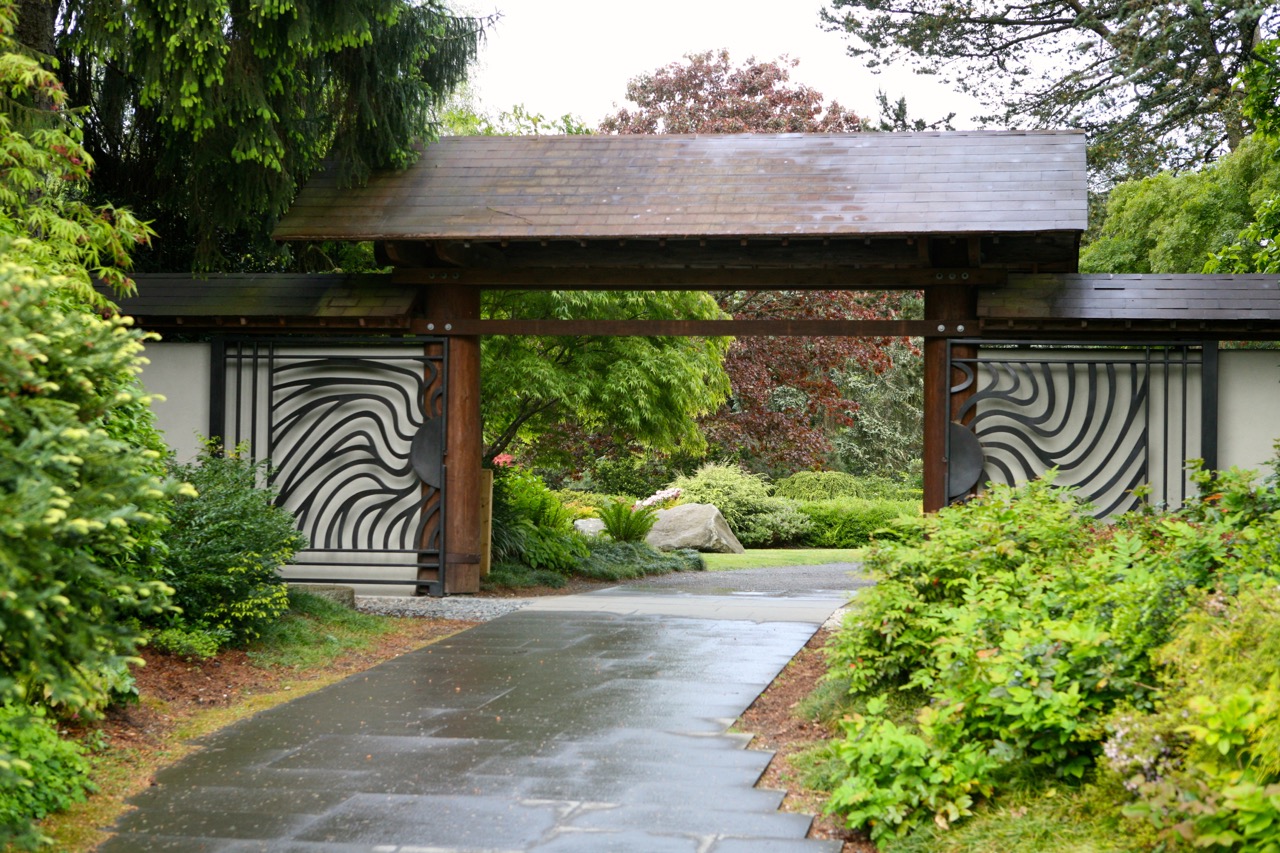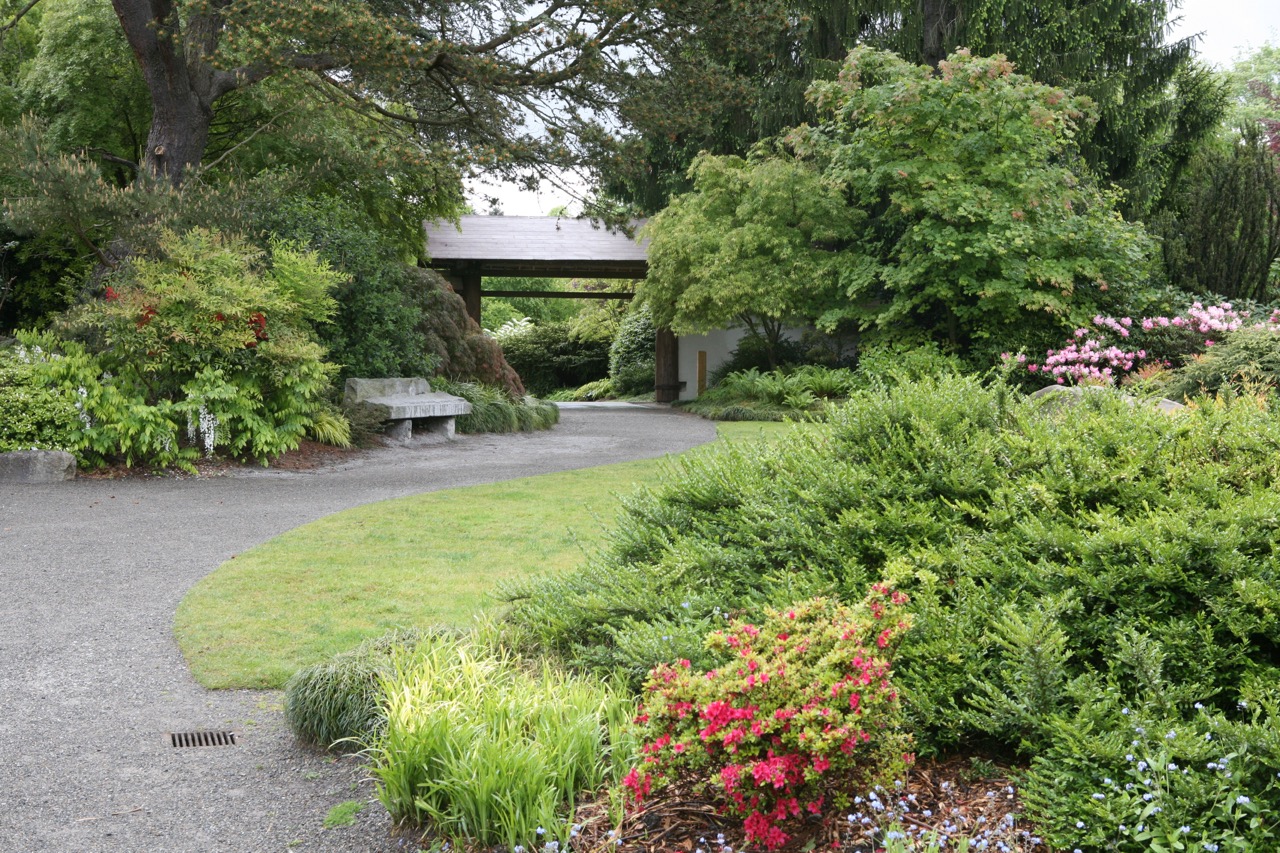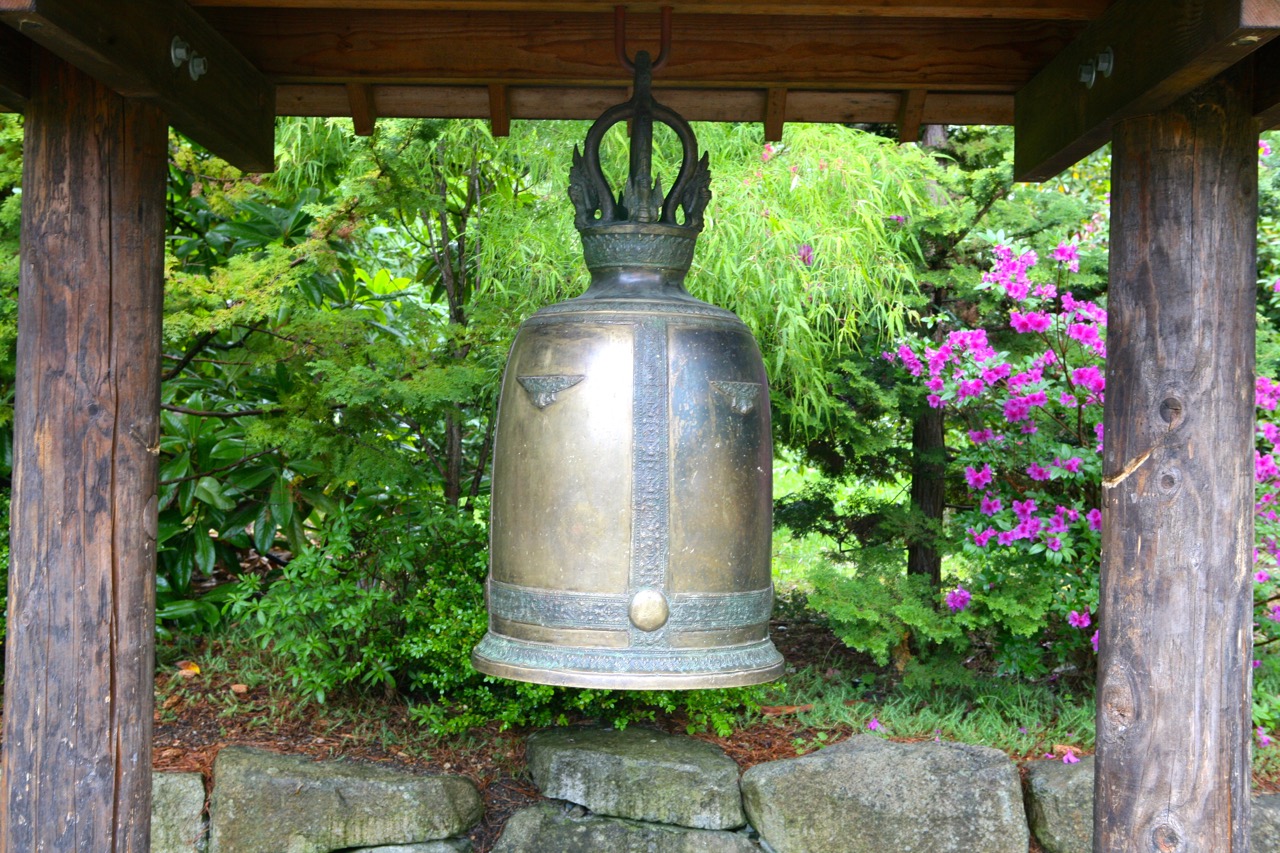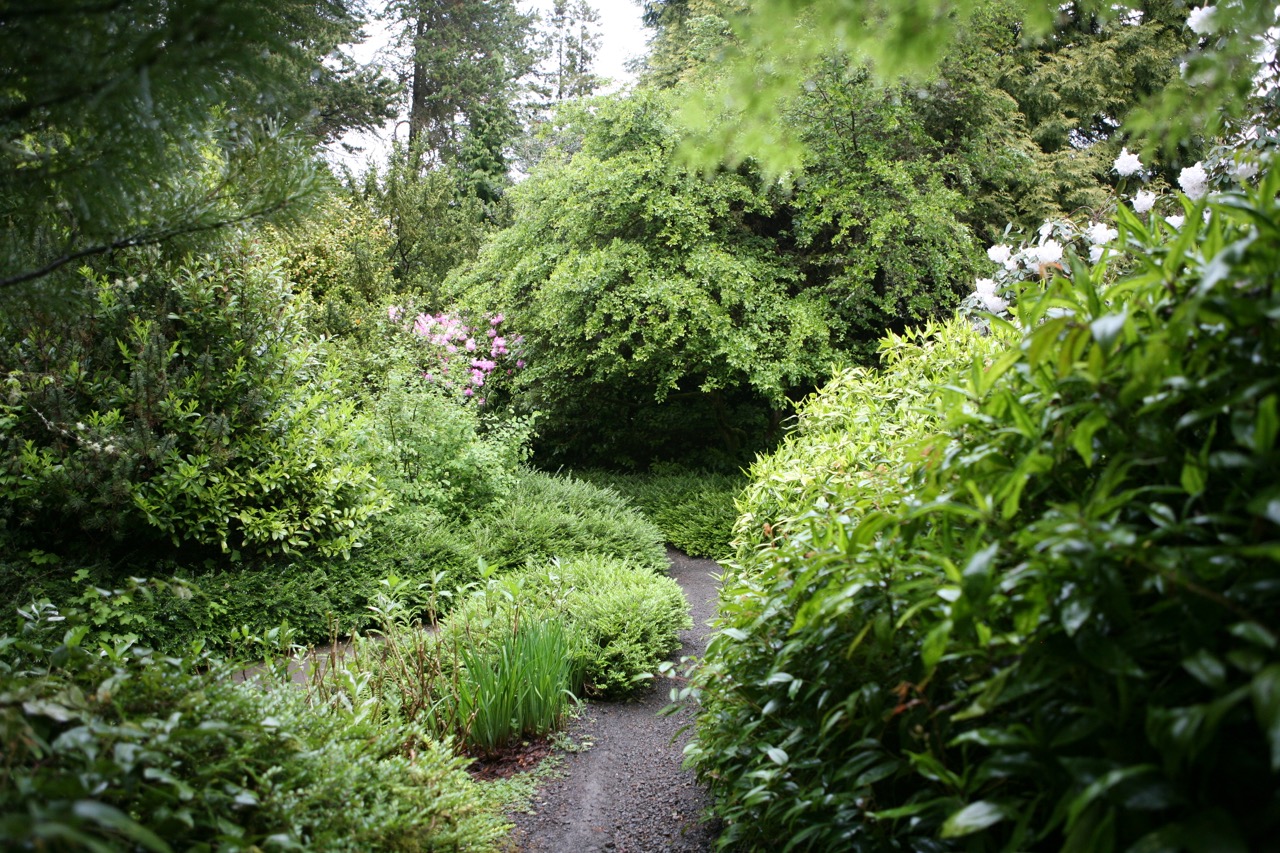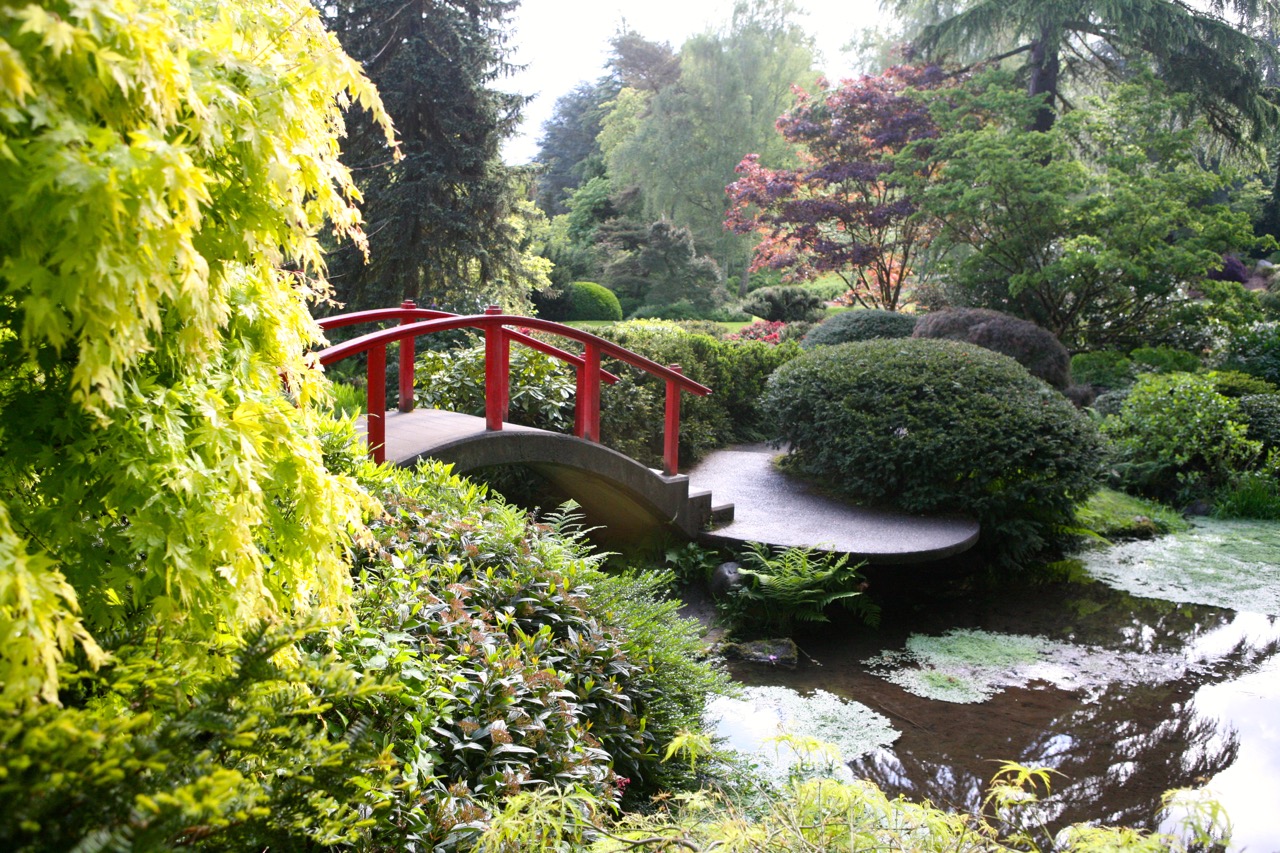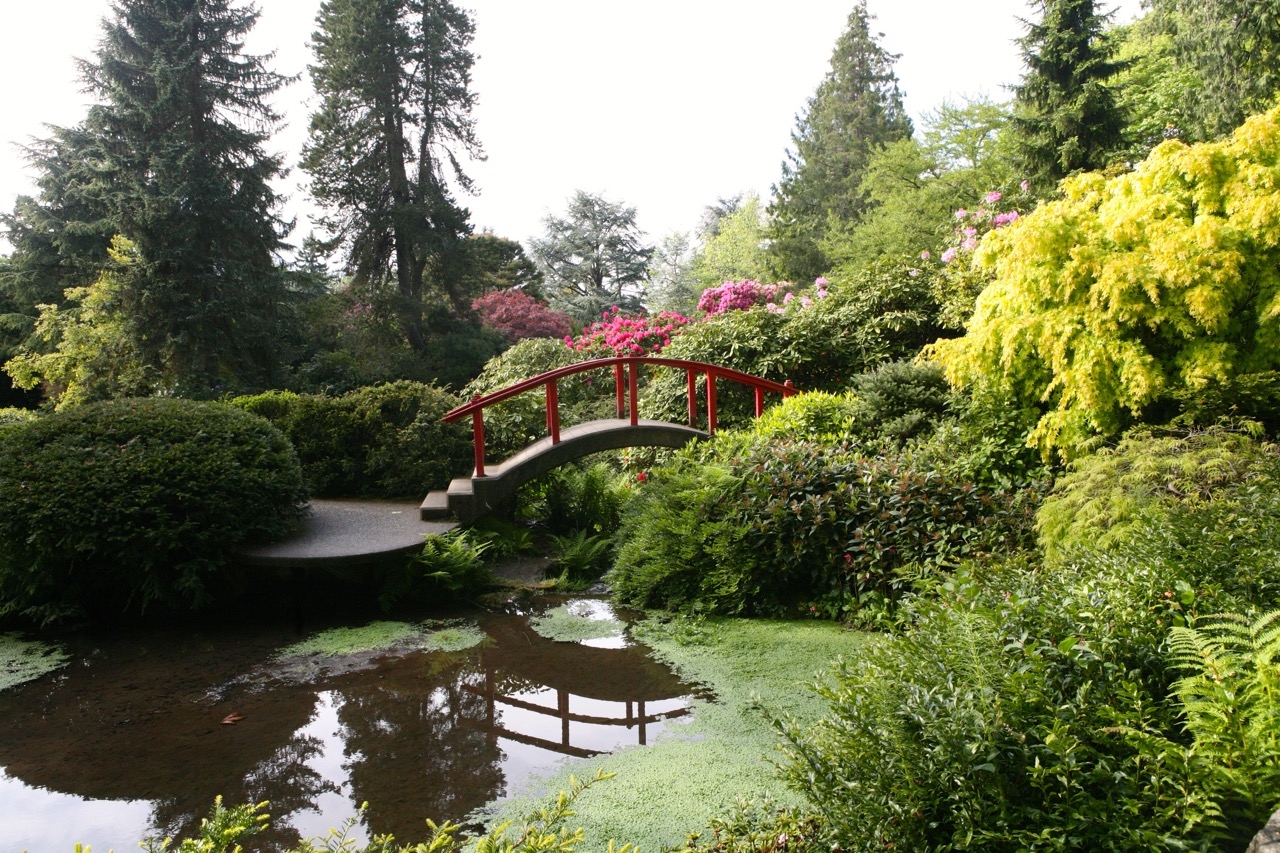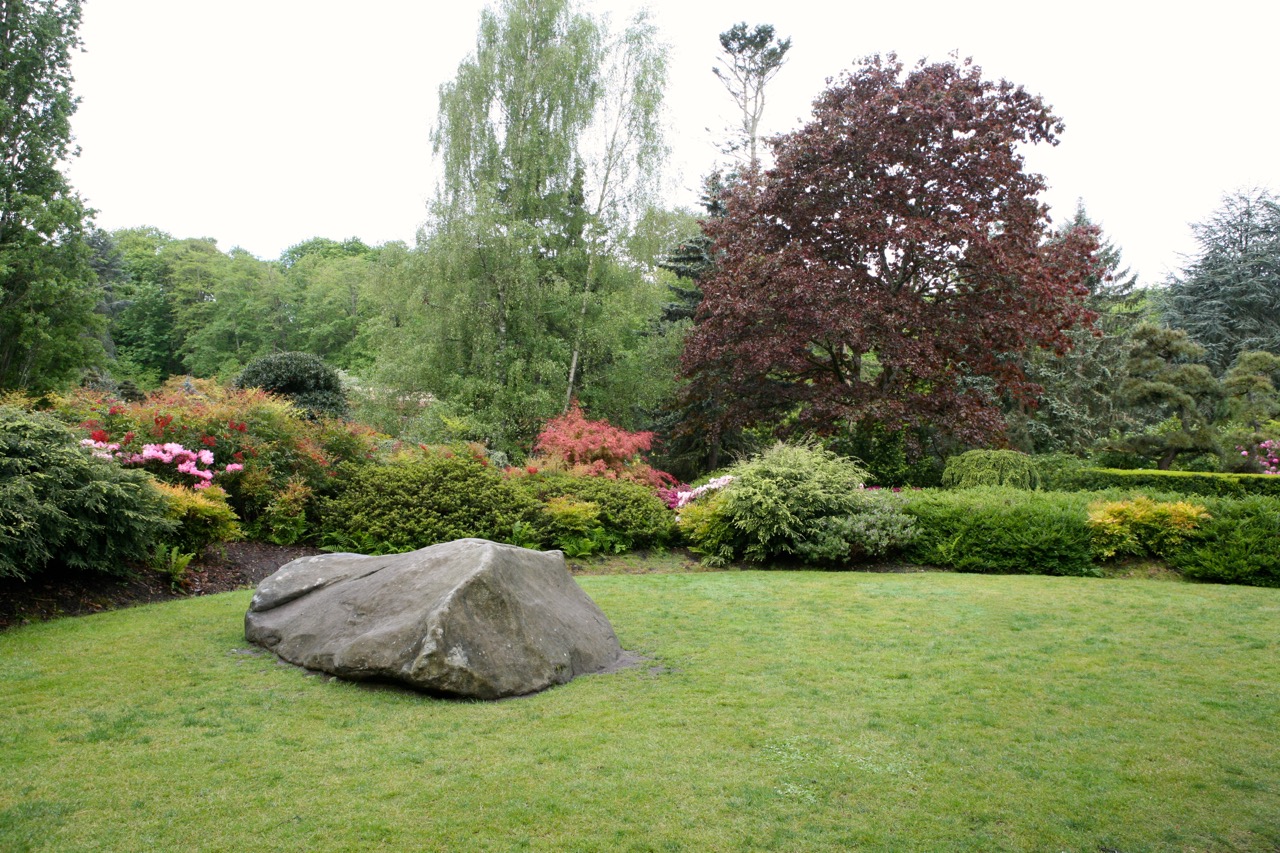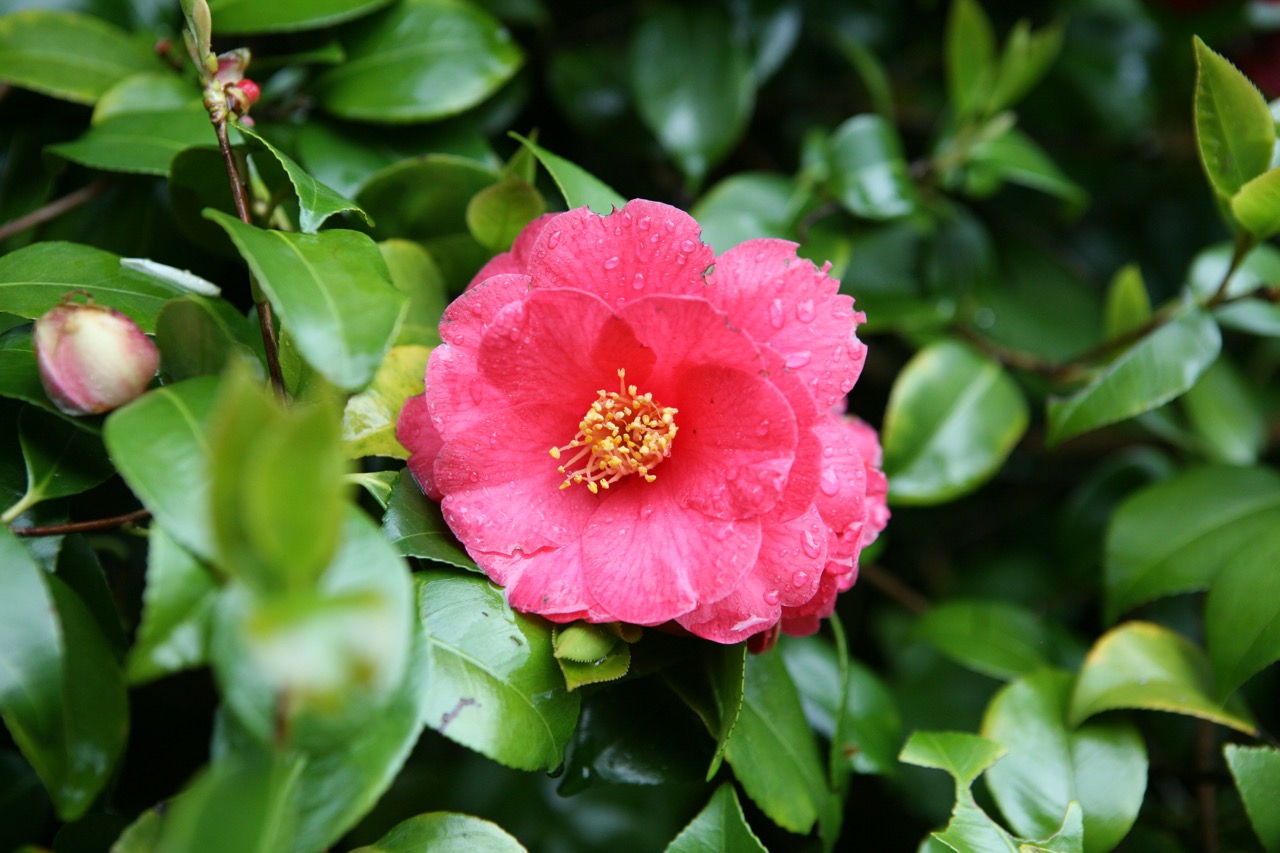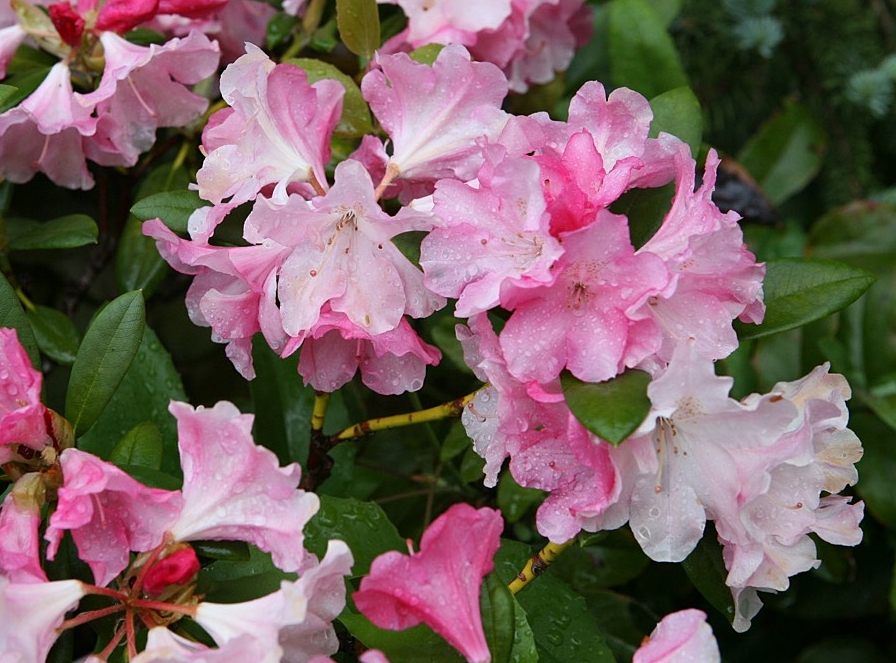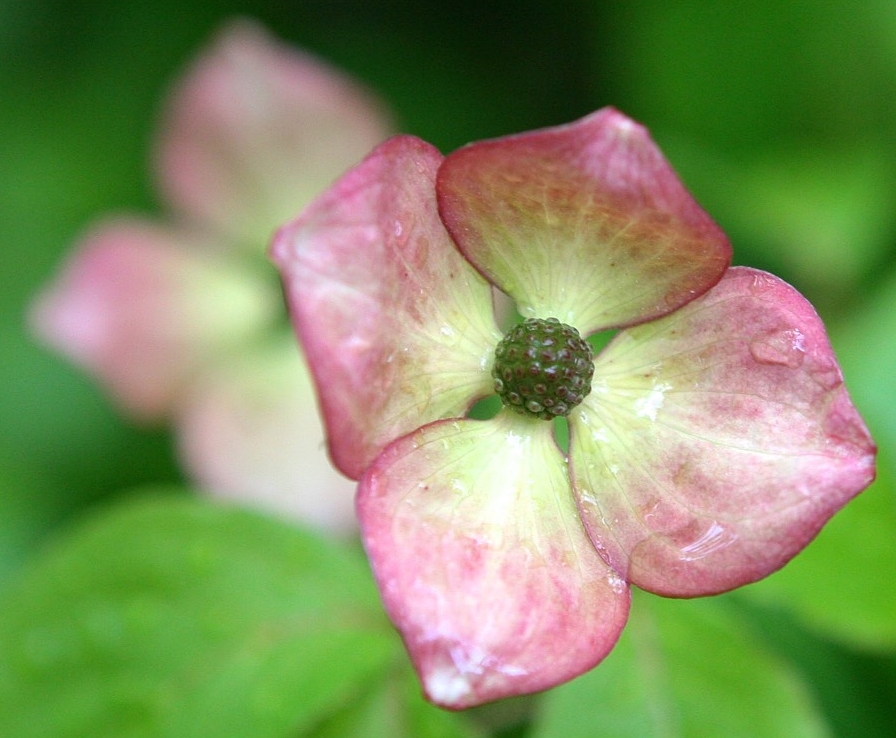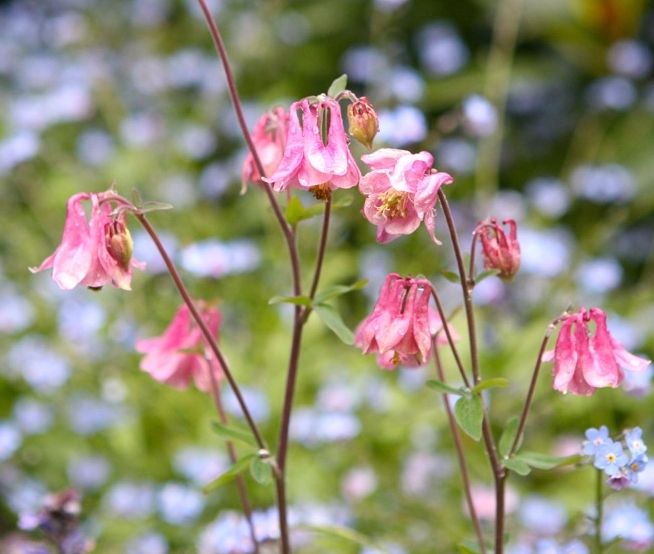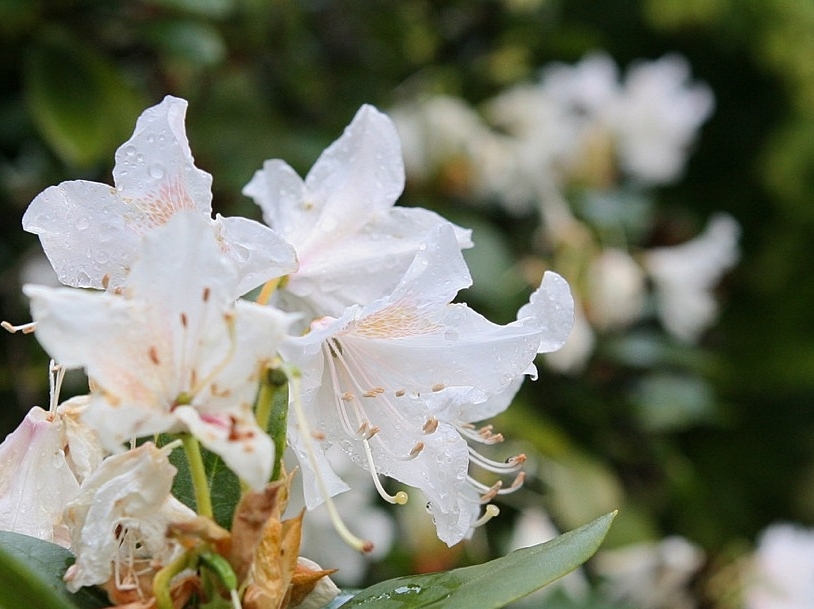“I had not been trained as a gardener. Dozens of times I got stuck and was in trouble. Then I went to the woods and prayed to the gods for help” - Fujitaro Kubota, creator of the Kubota Japanese Garden in Seattle, WA, from a 1965 interview
It is safe to say that the garden gods indeed answered Fujitaro Kubota with inspiration. His life’s work, Kubota Garden, is known as one of the best gardens in Seattle and earned him the Fifth Class Order of the Sacred Treasure by the government of Japan for “building respect for Japanese gardening and culture.”
A Buddhist prayer bell at the garden's entrance let's us know that we are entering a contemplative space.
An entrance gate and bell mark the separation between the hectic outside world and the serene garden space. The gate provides a clear welcome and shelter. The hanging bell or bonsho is used in Buddhist temples as a call to prayer. Seen in Japan as early as 600 CE, these originated in China much earlier, like most elements of Japanese garden design. The bell was an element brought over by traveling monks. It further moves us into a more reflective, quiet space.
Winding paths guide visitors through various landscape areas. In some places the walk is wide to invite side by side strolling. Other times plant material embraces the walk so that one person can barely squeeze through. Each turn frames another thoughtful naturalistic view.
Japanese gardens are designed for year-round, subtle interest. They typically emphasize texture, shape, shade. These are meant to be quiet spaces that relax and restore. Although Kubota Garden follows this tradition, I can’t help sharing this spring time visit to the Kubota Garden. Flowering azaleas, dogwoods, and forget-me-nots add pops of color that delight.
There are opportunities to appreciate them up close. And by taking advantage of the sloping property, there are chances to take them in through sweeping views.
The Moon Bridge at the San Francisco Tea Garden at Golden Gate Park is the most extreme example I've seen. It was too difficult for me to climb.
Iconic Japanese features can be seen throughout. Like the perfectly placed moon bridge. From a distance, the bridge blends into the naturalist landscape as a contrasting but complementary element. The moon bridge is considered a metaphor for life – “hard to walk up, hard to walk down.”
Kubota Garden is an oasis in a busy city. The design deploys powerful Japanese garden techniques to create a spiritual place that restores.
Fujitaro Kubota, an immigrant from Japan, started his garden in 1927 to house his growing landscape business. until his death in 1973 , He worked on it as a place to showcase Japanese garden design using northwest hardy plants and local stone. The garden continued to evolve under his son Tom’s direction. In 1981, the core garden area was designated an Historical Landmark by the Seattle Landmarks Preservation Board. A few years later, the city of Seattle acquired the rest of the garden so that it could remain open to the public. Today the Kubota Garden Foundation works to “support, enhance and perpetuate Kubota Garden within the spirit and vision of Fujitaro Kubota.”
Now a public park, the garden is open to the public from sunrise to sunset. While free, visitors can support the garden through the Kubota Garden Foundation.
A few of the spring pleasures at Kubota Garden - the rain lends them a jewel-like quality. Learn more about Kubota Garden here.


